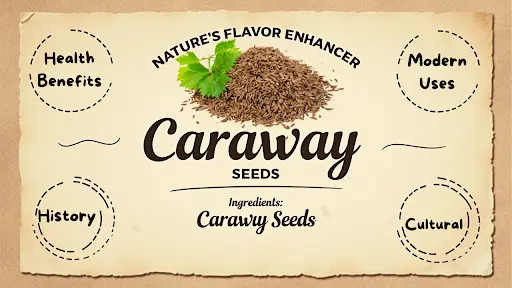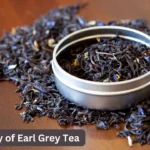Introduction to history: cultural significance of caraway seeds.
Caraway seeds, the small crescentshaped fruits of the Carum carvi plant, have been prized for centuries for their delicious flavour, medicinal value and cultural importance. These seeds are found in kitchens and in medicine cabinets world wide and tell a fascinating history which lives even today in both culinary and wellness aspects. Here we take a deeper look at the historical roots, cultural uses and today’s applications of caraway seeds.
A History of Caraway Seeds
The ancient lineage of caraway seeds goes back thousands of years. These were used by early humans, in prehistoric dwellings, and evidence of their use has been found. Some key historical highlights include:
- Ancient Egypt: In bread, and to settle the stomach. They were also found in burial tombs for the importance of them in daily life and rituals.
- Roman Empire: Caraway seeds were used by Romans as spice and preservative. The seeds were used with the belief that they improved digestion, and the Romans put them in wines and dishes.
- Middle Ages: Caraway seeds became a culinary and medicinal item in Europe. Commonly included in bread, cheeses and desserts.
- Ayurvedic and Traditional Chinese Medicine: In Eastern medicine, caraway seeds have typically been used for their warming and digestive properties for many years.
The cultural significance of Caraway seeds.
The caraway seeds have a rather high position in culinary and cultural traditions of different regions. In some cultures they symbolize good fortune, love and protection. Below are a few examples:
- European Traditions: In Germany and Austria, caraway seeds are added to bread at least partially to promote health and to scare away evil spirits.
- Middle Eastern Cuisine: Dishes like kibbeh includes caraway seeds, which the seeds are also used to flavor desserts and beverages.
- North African Culture: Caraway seeds form part of harissa spice blend and are said to be protective.
- Folklore: Caraway seeds were also believed to keep lovers faithful throughout history, and were used in love potions.
Caraway seeds also find a place in modern culinary service.
Caraway seeds are the rockstars of today’s kitchens for their unique flavour, which is an earthy nutty and only slightly peppery intermixture. They are versatile and can add to any number of savory or sweet meals. Common culinary uses include:
1. Bread and Baked Goods
Rye bread and soda bread simply wouldn’t be the same without the addition of caraway seeds, which add some texture and burst of flavour.
2. Pickling and Preserving
Although used less widely, the seeds are an essential component of pickling recipes for cucumbers, beets, cabbage (as in sauerkraut).
3. Spice Blends
Spice mixes like garam masala, ras el hanout and German sauerbraten seasoning include such caraway seeds.
4. Soups and Stews
Hearty soups and stews, especially those with potatoes, carrots, or beans are complimented by them.
5. Herbal Teas
According to popular tradition, caraway tea has soothing digestive qualities and a beautiful aroma as well.
Medical Applications and Other Wellness
Because of their health benefits, modern wellness practices still value the caraway seeds. In many forms they are used, such as in the essential oils, teas, and dietary supplements. Notable applications include:
1. Digestive Health
Caraway seed also calm the digestive tract, have carminative properties to reduce bloating, gas, and indigestion. Caraway tea, taken with hot water, is a well known cure for stomach complaints.
2. Anti-inflammatory Properties
Caraway seed are rich in antioxidants and anti inflammatory compounds which could reduce inflammation in the body and is generally good for your overall health.
3. Respiratory Benefits
Caraway seed are known to treat cough, soothe sore throat and remove the congestion. They’re found in many natural remedies for respiratory health, thanks to their essential oils.
4. Skin and Hair Care
Caraway seed, however, when used in oils or creams, nourish the skin, reduce acne and promote hair growth.
Today caraway seed are more commonly used for seasoning food, but past uses may surprise you.
- Essential Oils
Essential caraway oil is used in aromatherapy, to relax and to improve digestion. Natural skincare products also include it.
- Dietary Supplements
Capsule or powder extracts of caraway seed are marketed to help with weight management and the digestive system.
3. Cooking and Baking
Even home cooks and chefs find ways to experiment with seeds, using them in more traditional and more inventive recipes.
How best to store and select caraway seeds.
Freshness and longest possible shelf life require that caraway seed be kept in a sealed container, away from heat and light. Whole seeds of caraway last longer than ground ones and they may last until their next year’s harvest too, so choose them when buying caraway seeds. Depending on your area, ground seeds can become ineffective quickly and should be used up within a couple of months.
Conclusion
Caraway seeds are much more than an addition of flavor to food and have a long history, cultural value, and uses that make them something special in today’s world. Caraway seed can be used to add flavor and depth to your favorite recipes, incorporated into your self-care regimen or simply learnt about for their historic uses. This goes on to show that they are still useful in cooking and medicine and this make them significant in the various cultures around the globe.


